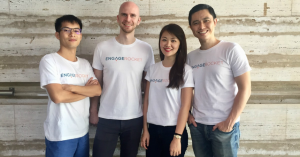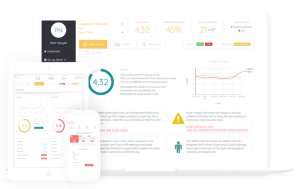Women Mean Business Too: How to #BalanceforBetter at the workplace
In light of International Women’s Day 2019’s theme #BalanceforBetter, it is a good reminder to take a look at gender balance in the workplace. According to BCG’s last report on gender diversity in SEA, much work has to be done: the higher up the leadership chain, the fewer women you find. Only 12% of CEO and board-level positions in SEA are held by women and this pattern repeats in other parts of the world.

Thus far, there have been efforts in understanding how women’s communication strategies can help or hinder their fortunes at work. Many women fail to speak out when they are overlooked for promotions and lack confidence to say whether they are happy in the workplace. By not speaking out, they fail to avail of higher positions. There is also a movement towards address culture within the workplace. Workplace culture that policies a narrow set of masculine norms and are intolerant of diversity will cause women to be seen as “the other” and become disengaged.

Dorothy Yiu (third from left) with her EngageRocket team
I had the privilege to speak to Dorothy Yiu, former Head of Operations for Gallup (SEA), and currently the COO and co-founder of EngageRocket, a Singapore-based HR tech startup. The interview provided very “techie” insights on the importance of an open and feedback culture, how to improve engagement at workplace, and how data analytics can speed up these processes.
What was the inspiration behind founding EngageRocket?
When I was 25, I was working for the HR consulting firm and I was thrown into people manager role without much training. One of the biggest challenges I faced was how much I relied on my “gut feeling” when I was making big or small decisions. In my view, I was someone who didn’t have proper training or experience in managing people. In the end, the results were inconsistent and I wasn’t even sure if I was making the best decision. This same challenge I noticed was also existing in a lot of the clients that we were working with, including my co-founder. At that point, we realized there has to be a better way to equip managers to adopt a data-driven approach, especially when they’re managing talents, the most expensive and the most important assets of the company, that you can’t just rely on your “gut feeling” to make decisions.
We wanted to leverage technology, because we believe that with technological advancement, we are able to equip people manager, like myself, with real-time data so that they can then make better and more important decisions. For this reason, I left my consulting career to start EngageRocket in 2016.
How is EngageRocket alleviating the challenges and “pain-point” faced by HR?
We are an HR-tech company that uses data analytics to improve employee experience. We collect and analyze employee feedback in real-time and present those aggregated data to HR so that they can, in turn, make better decisions for the employees especially when it comes to motivating the employees, understanding their struggles and identifying the skill gap within the organization to see what training is needed. In order to do so, we facilitate pulse surveys by using well-researched questions to get feedback, and we do so in a full cycle, from on-boarding day to the day the employee leaves the company. Collecting feedback from day 1 to the end can greatly help organizations understand the employees better through something measurable like data.

A sample dashboard on EngageRocket
Women Empowerment: How to enable women to speak up at work place?
According to research at Cambridge University, women are 2.5 times less likely to speak up than men. We are aware that if you have a group of employees in the room, and you are asking them face-to-face on how they would make the company better, it is most likely that men will be giving feedback instead of women. How tools like EngageRocket help this aspect is, we provide a confidential way for employees to provide feedback at a private setting. In situations where women are more unlikely to speak up, this is a very good alternative way for them to provide feedback and to allow their voice to be heard, which in turn will give them more opportunities to make a difference towards their engagement at workplace.
At the end of the day, it’s not just about getting employees to provide feedback, but the more important action is how the organization leaders take actions in response to that feedback. If there are no actions taken by the managers or if the employees don’t feel “heard”, then there will be no changes among the people and satisfaction at work.
How can we develop an open and feedback culture in an Asian society where employees tend to be less forthcoming?
To start collecting feedback on a regular basis from the employees is a good starting point. You’ll be surprised that a lot of organizations, especially in Asia, are not collecting feedback. Even if they do, it’s usually done once a year, or once in two years - which is not enough. Because if I only go to my employees and say “hey, how are you feeling?” once a year, and we share back the result 4-5 weeks later to the managers. By the time managers get the result, it would be 3 months later. Then, by the time they see the result, they look at their team, chances are half the team has already changed or the people who are not happy would probably have left the organization.
Outdated results are also irrelevant because the usefulness of data degrades over time. So, the longer it is for you to record back the result, the less useful the results are. In the end, in order to develop an open and transparent culture, organizations need an open communication tool. Slack, for example, is also another very good tool to keep communications open. Another very important thing is closing the feedback loop, meaning, going back to the employees and saying “I’ve heard you. These are the result I’m sharing back and these are the actions we’re going to take based on the feedback.” - these are the most important part of ensuring an open culture. Actions from the managers are equally as important as feedback given by the employees. If you look at more mature markets like the US, Australia and Europe, they’re a lot more mature in terms of understanding the importance of feedback and closing the feedback loop, versus how we work with customers or employees here in Asia. It’s a growing trend here in Asia and I definitely hope to see more open culture at workplace here in the region.
What are the future plans and area of focus?
We want to help people make use of people analytics. People analytics involve both operational data and experiential data, but at this point in time, people don’t collect experiential data very well yet, and we want to support companies in the connection of data.
Speaking from the data analytic value chain viewpoint, we are currently at descriptive analytic and diagnostic analytic stages, where we help organizations collect data and giving the insights of what key factors are behind the result of the feedback. For the next few years, we are working very hard with our data scientists and engineers to develop predictive analytic and prescriptive analytic tools.
Conclusion
Diversity is today understood to be a real asset, constantly enriching a company. Gender balance has become a leading topic in strategies of private and public enterprises to grow in economic, political and social influence. Neglecting women in recruitment and promotion is neglecting half the world’s brain power and no company can afford to do so in a war on talent.
Written by: Vanessa Techapichetvanich
ลงทะเบียนเข้าสู่ระบบ เพื่ออ่านบทความฟรีไม่จำกัด






